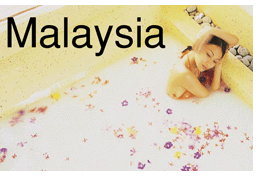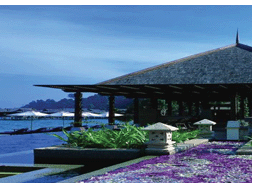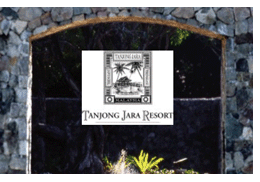|
||||||
| Cambodia, China, India, Indonesia, Japan, Malaysia, Maldives, Thailand, Vietnam, Singapore, Bali Malaysia • LIFE EXPECTANCY = 70 years Healing Traditions of Malaysia “Bomohs” slamic Traditional Healing  Malaysia is a multiethnic, multicultural and Malaysia is a multiethnic, multicultural andmultireligious country where the three main ethnic groups, comprising Malays, Chinese and Indians, live and work together in harmony for the last three decades. Traditional healing in Malaysia is not limited to utilizing therapeutic, physical means or to prescribing a dose of medicine or herbs; it is a holistic approach that caters for the spiritual and psychological needs of patients, together with all other modes of treatment. A folk medicine practitioner in Malaysia is called a bomoh, dukun, or pawang according to the period a student spends studying. The studies undertaken, which equip practitioners to prescribe proper medication to patients, cover the philosophy of life; therapeutic usages of herbs, metals, and animals parts; and the relation between the above disciplines and human beings and their lives. Folk medicine practitioners, especially the elders who are called touks, are treated with great respect, particularly in rural societies. Knowledge of traditional healing is usually passed on from one member of the family to another, allowing them to practice folk medicine as a career or as a secondary occupation. The healer usually chooses a younger family member he deems most suitable to pass his knowledge to. Bomohs start their education by studying the sciences of the Shariah (Islamic law), including jurisprudence, monotheism, and Sufism, which are necessary for the bomohs not only to practice but also to get the recognition of the Muslim communities in which they live; especially with the prevalence of Islamic awakening, these communities will not recognize bomohs who have no knowledge of medical-related Shariah injunctions, without which bomohs are bound to get entangled in superstition and trickery. To qualify as a bomoh, a student must study at the hands of teachers, who are scattered throughout the country (some bomohs study under as many as 21 teachers). In his pursuit of knowledge, a student is required to travel to distant villages or even provinces, especially when he wishes to study under a renowned bomoh teacher who is steeped in traditional medicine and endowed with extensive knowledge of the Shariah. Some teachers may be knowledgeable of the usages of some 4,000 extracts from herbs, animals, metals, and liquids. Pangkor Laut Resort and Spa Village, Tanjong Jara Resort, malaysia  Jamu Bar  Spa entrance Because bomohs don’t usually commit their knowledge to paper, a great deal of information is lost when an experienced bomoh dies. When a bomoh attempts to publish his recorded reservoir of knowledge, he usually grapples to get the support he needs. Many bomohs prefer not to divulge the secrets of the medicines they prescribe for fear that others may produce them or that these medicines might be misused, which could cause other health problems. Malaysian Healing Traditions • Muslim Rituals Predominate - Mandi Safar – Muslim Bathing Festival • Folk Medicine Through a Bomoh - Spiritual Therapy - Massage Therapy - Herbal Remedies • Mandi Bunga (Floral Baths) 1) Spiritual therapy for the treatment of spiritual and psychological conditions, including obsession, panic, depression, insomnia, and magic spells. Bomohs, who adhere to a professional code of ethics, use ruqia (Quranic recitation over the patient) and prayers reported in authentic sources. Malaysians’ belief in the effectiveness of these methods facilitates their healing. Bomohs also use lemon extract, as well as water obtained from the well of zamzam, rain that falls on Thursday nights, or local boreholes (boreholes are scarce, as rain and river water are Malaysia’s main sources of water supply). 2) Massage therapy is widely practiced in South- and North-Eastern Asia, where each region has its own distinct methods, balms, and instruments. A Malaysian massage can be (a) a whole-body massage, which many men and women practice in their homes, shops (including barbershops and hairdressing salons) and specialized clinics; (b) the massage of a particular part of the body, such as the head, neck, or spine; (c) a massage for the treatment of a specific ailment or condition, such as infertility, weakness of men’s sexual performance or impotency, where massage helps restore blood circulation. 3) Herbs used are numerous and available in many forms: liquids, oils, balms, pills, tablets, powders, and leaves (boiled like tea leaves). Herbal remedies function differently from modern medicines manufactured according to western methods. In principle, herbal remedies work to restore the natural balance to body organs and systems. This can be achieved by cleansing blood from harmful elements, improving blood circulation, improving the digestion and assimilation of food, treating swellings and tumours, relieving pain and discomfort, balancing body secretions, and improving the appetite. © SPA MANAGEMENT JOURNAL - JANUARY 2006 |
||||||